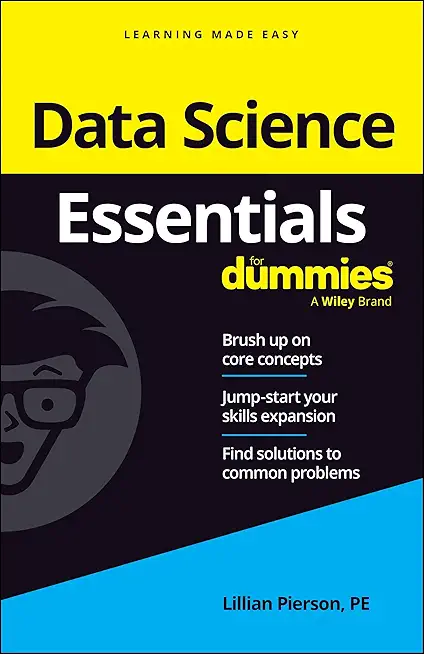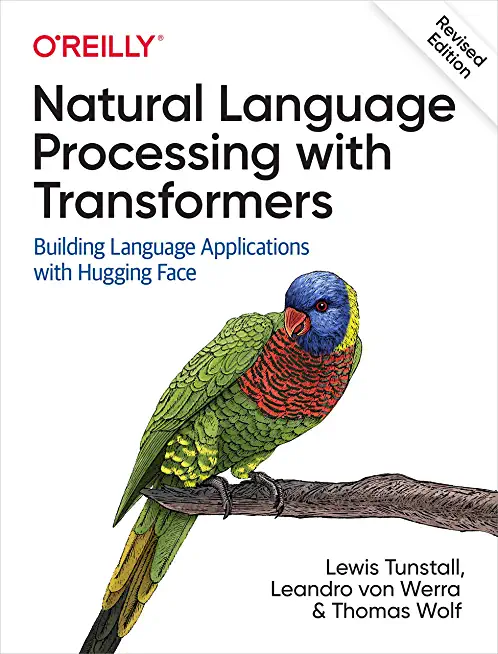Oracle 10g Database Administration Training in Munster, Germany
|
We offer private customized training for groups of 3 or more attendees.
|
||
Course Description |
||
| This class will develop the key fundamental skills necessary to be an Oracle DBA. Students will design and create a server using the Optimal Flexible Architecture (OFA),configure logical and physical structures, set up database and user security, add and administer users, and monitor and tune main server areas. Each student will create a toolkit of administration scripts for database management and tuning by the end of this class. This class will also address issues for DBAs having to support Oracle 8i and Oracle 9i databases.
Course Length: 5 Days
Course Tuition: $2250 (US) |
||
Prerequisites |
|
| Introduction to Oracle 10g, or at least six months working in an Oracle technical environment. An understanding of relational database concepts, SQL, and PL/SQL programming skills are required. A solid understanding of Oracle schema is recommended. | |
Course Outline |
|
1. Overview of Oracle Database ORACLE_HOME and ORACLE_SID The Oracle Database vs. The Oracle Instance Instance Memory Structures Background Processes Server Processes Datafiles Blocks, Extents, and Segments Control Files Redo Logs The Oracle Architecture SYS and SYSTEM Users 2. Starting and Shutting Down an Oracle Database SYSDBA and SYSOPER System Privileges Oracle Database Startup Oracle Database Shutdown Altering Database Availability Suspending and Resuming a Database Quiescing a Database Tracking Database Activity - The Alert Log Data Dictionary Views for Startup and Shutdown 3. Using The Oracle Data Dictionary Introducing the Data Dictionary DBA, ALL, and USER Data Dictionary Views V$ Dynamic Performance Views Using Oracle Documentation to Locate Data Dictionary Views Combining Data Dictionary Views 4. Oracle Database Users and Schemas Users and Schemas Oracle Default Database Users Oracle Sample Schemas Creating Users Altering and Dropping Users Data Dictionary Views For Users 5. Oracle System Privileges Overview of System Privileges Granting and Revoking System Privileges Data Dictionary Views for System Privileges Roles Creating and Removing Roles Data Dictionary Views for Roles Pre-defined Roles User Group PUBLIC 6. Parameter Files Oracle Database Parameters The Parameter File (PFILE) and the Server Parameter File (SPFILE) Dynamic vs. Static Parameters Determining Current Parameter Settings Benefits of SPFILEs over PFILEs Creating an SPFILE from a PFILE and Back Again Understanding Scope Session-Level Parameters Data Dictionary Views for Parameters 7. Datafiles and Tablespaces Datafiles Overview Tablespaces Overview SYSTEM and SYSAUX Tablespaces Creating Tablespaces Dictionary- and Locally Managed Tablespaces Locally Managed Tablespace Extent Allocation Temporary Tablespaces Temporary Tablespace Groups Default Tablespaces Tablespace Quotas Dropping and Altering a Tablespace Renaming a Tablespace Renaming or Relocating Datafiles Bigfile Tablespaces Data Dictionary Views for Datafiles and Tablespaces 8. Control Files Control Files Overview Database Parameters for Control Files Backing Up Control Files Restoring Control Files from Multiplexed Copies Restoring Control Files from Backups Moving Control Files Data Dictionary Views for Control Files 9. Oracle Physical Structures — Online Redo Logs Redo Redo Log Files Database Parameters for Redo Sizing the Redo Log Files How Many Redo Log Groups? Creating Redo Logs Removing Redo Logs Renaming Redo Log Files Forcing Log Switches Archiving Redo Logs Configuring Archive Log Mode Database Parameters for Archiving Data Dictionary Views for Redo Logs 10. Oracle Physical Structures — Undo Segments Undo Overview Database Parameters for Undo Creating Undo Tablespaces Altering and Dropping Undo Tablespaces Switching Undo Tablespaces Undo Advisor Data Dictionary Views for Undo 11. Segment Space Management Blocks, Extents and Segments Segment Space Management Fragmentation Coalescing Fragmented Space Row Migration and Chaining Manual Segment Space Usage Automatic Segment Space Management Data Dictionary Views for Physical Objects 12. Tables Tables Overview Physical Properties of Tables Creating Tables Table Storage and Logging Altering Tables Dropping Tables The Recycle Bin The TRUNCATE COMMAND Temporary Tables Clustered Tables Indexed-Organized Tables Creating an IOT Data Dictionary Views for Tables 13. Indexes Indexes B-tree Indexes NULL Values and Indexes NULL Values and Unique Indexes Creating Indexes Monitoring Index Usage Dropping Indexes Rebuilding and Moving Indexes Coalescing Indexes Bitmap Indexes Special Index Types Index Key Compression Data Dictionary Views for Indexes 14. Constraints Integrity Constraints Constraint Names and Syntax Constraint Checking Managing Primary Key Constraints Managing NOT NULL Constraints Managing Check Constraints Managing Foreign Key Constraints Data Dictionary Views for Constraints 15. Views Views Creating and Replacing Views Data Dictionary Views for Views Security Through Views Altering and Dropping Views Dependencies and Views Updating Data Through Views 16. Object Privileges Object Privileges Granting and Revoking Object Privileges Using WITH GRANT OPTION Revoking and the GRANT OPTION Data Dictionary Views for Object Privileges 17. Synonyms Synonyms Private and Public Synonyms Creating and Dropping Synonyms Security and Synonyms Object Precedence 18. The Optimizer and Statistics Optimizer Overview Optimizer Statistics Data Dictionary Views and Statistics Collecting Statistics Removing Statistics Automated Statistics Collection 19. Oracle Net Services Oracle Networking Explained The Net Configuration Assistant Configuring the Listener — GUI Configuring the Listener — Manually Configuring the Client — GUI Configuring the Client — Manually 20. Data Pump Oracle Data Pump Architecture Configuring for Data Pump Command-Line Utilities Exporting With expdp Importing With impdp Interactive Mode Attaching to a Running Job Parallel Data Pump Data Dictionary Views for Data Pump 21. SQL*Loader and External Tables SQL*Loader SQL*Loader Control File Loading Data with SQL*Loader Conventional vs. Direct Path Loads External Tables Overview Creating an External Table Creating a Writable External Table 22. Back Up Your Database Physical Backups vs. Logical Backups Offline Backup Basics Oracle Offline Backup Steps Other Backup Considerations Advanced Backup Concepts RMAN 23. Recover Your Database Offline Recovery Basics Restoration Using Offline Backups for a NOARCHIVE Database Restoring Other Files Other Recovery Considerations 24. Oracle Enterprise Manager Introducing Oracle Enterprise Manager OEM Architecture and Physical Structure Installing OEM When Using DBCA Using EMCA to Install OEM Managing OEM Removing OEM Troubleshooting OEM Securing OEM Starting OEM Introducing the OEM Home Pages Using OEM — Managing the Job Scheduler Using OEM — Using Metrics, Alerts, and Thresholds Automatic Workload Repository The Automatic Database Diagnostic Monitor — ADDM OEM and Advisors The SQL Access Advisor 25. Appendix A – Installing Oracle Software Optimal Flexible Architecture OFA Directory Layouts The Oracle Universal Installer OUI Installation Modes Preparing To Install Software Starter Database Installing the Oracle Software Deinstalling Oracle Software 26. Appendix B – Creating a Database Using the DBCA The DBCA Select a Database Template Specify the Database Name Set System Account Passwords Specify File Locations Install Sample Schemas Specify Storage Parameters Create Your Oracle Database Oracle Net Configuration Assistant Configure the Listener Set TCP Parameters Removing a Database with the DBCA 27. Appendix C – Manual Database Creation Manual Database Creation Prepare the System Creating the Parameter File The CREATE DATABASE Statement Manually Create the Database Finalizing the Creation SQL.BSQ File Creating the Service on Windows 28. Appendix D – Auditing the Database Auditing Explained Data Dictionary Views for Auditing Audit Trail, OS, and DB Statement Auditing Privilege Auditing Object Auditing |
Course Directory [training on all levels]
- .NET Classes
- Agile/Scrum Classes
- AI Classes
- Ajax Classes
- Android and iPhone Programming Classes
- Azure Classes
- Blaze Advisor Classes
- C Programming Classes
- C# Programming Classes
- C++ Programming Classes
- Cisco Classes
- Cloud Classes
- CompTIA Classes
- Crystal Reports Classes
- Data Classes
- Design Patterns Classes
- DevOps Classes
- Foundations of Web Design & Web Authoring Classes
- Git, Jira, Wicket, Gradle, Tableau Classes
- IBM Classes
- Java Programming Classes
- JBoss Administration Classes
- JUnit, TDD, CPTC, Web Penetration Classes
- Linux Unix Classes
- Machine Learning Classes
- Microsoft Classes
- Microsoft Development Classes
- Microsoft SQL Server Classes
- Microsoft Team Foundation Server Classes
- Microsoft Windows Server Classes
- Oracle, MySQL, Cassandra, Hadoop Database Classes
- Perl Programming Classes
- Python Programming Classes
- Ruby Programming Classes
- SAS Classes
- Security Classes
- SharePoint Classes
- SOA Classes
- Tcl, Awk, Bash, Shell Classes
- UML Classes
- VMWare Classes
- Web Development Classes
- Web Services Classes
- Weblogic Administration Classes
- XML Classes






